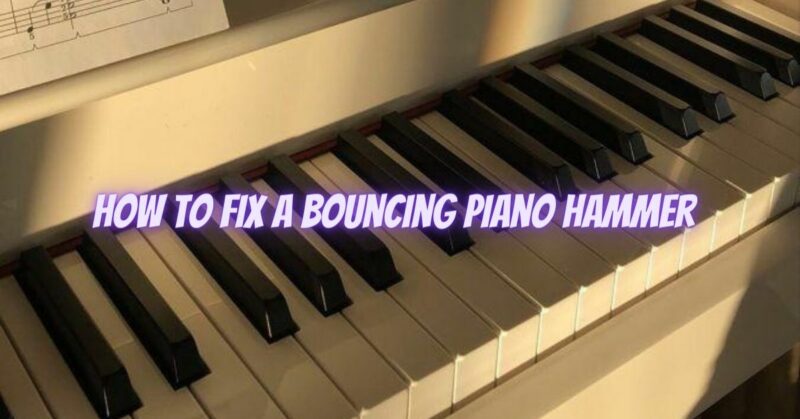A bouncing piano hammer, also known as “jack bounce,” is a common issue that pianists may encounter. When a hammer bounces, it can cause multiple strikes on the strings, leading to an erratic and disruptive sound. This problem is usually caused by misalignments or wear in the piano action, but with some careful adjustments, it can be fixed. Here’s a step-by-step guide on how to address and resolve a bouncing piano hammer:
1. Identify the Problem:
- Play the affected key and observe the behavior of the hammer. If it bounces excessively or produces multiple strikes on the string after a single key press, you are dealing with a bouncing hammer.
2. Check for Misalignments:
- Inspect the piano action, paying close attention to the components involved in hammer movement, such as the jack, repetition lever, and flange. Look for any misalignments, excessive play, or damage that may be causing the hammer to bounce.
- Gently move these components to check for smoothness and proper alignment. If you notice any misalignments, consider seeking the help of a professional piano technician to make the necessary adjustments.
3. Regulate the Jack and Repetition Lever:
- Proper regulation of the jack and repetition lever is crucial to prevent hammer bouncing. Regulation involves adjusting the height and alignment of these components to ensure precise and controlled hammer movement.
- Jack regulation can be a complex process, and it is best left to a qualified piano technician with experience in piano action regulation.
4. Check the Hammer Butt Spring:
- The hammer butt spring provides resistance to the hammer movement. If this spring is too weak or worn out, it can cause the hammer to bounce.
- Inspect the hammer butt spring for any signs of wear or damage. If necessary, replace the spring or adjust its tension to ensure proper hammer control.
5. Address Damper Timing:
- An issue with the damper timing can also lead to hammer bouncing. Check the damper mechanism to ensure that it is properly synchronized with the hammer movement.
- Adjust the damper timing if needed to prevent premature dampening of the string before the hammer completes its movement.
6. Seek Professional Assistance:
- If you are unsure about making adjustments yourself or if the issue persists, it is best to seek the assistance of a qualified piano technician. They can diagnose and fix more complex problems related to hammer bouncing.
7. Regular Maintenance:
- Regular tuning and maintenance are essential for keeping your piano in optimal condition and preventing issues like hammer bouncing. A well-maintained piano will provide better performance and a more enjoyable playing experience.
In conclusion, fixing a bouncing piano hammer requires careful inspection and adjustments of the piano action components. Addressing misalignments, regulating the jack and repetition lever, and checking the hammer butt spring are crucial steps to resolve the issue. Seek professional help if needed, and ensure regular maintenance to keep your piano in excellent playing condition. With proper care and attention, your piano will produce beautiful and controlled tones, allowing you to fully enjoy your musical journey.


